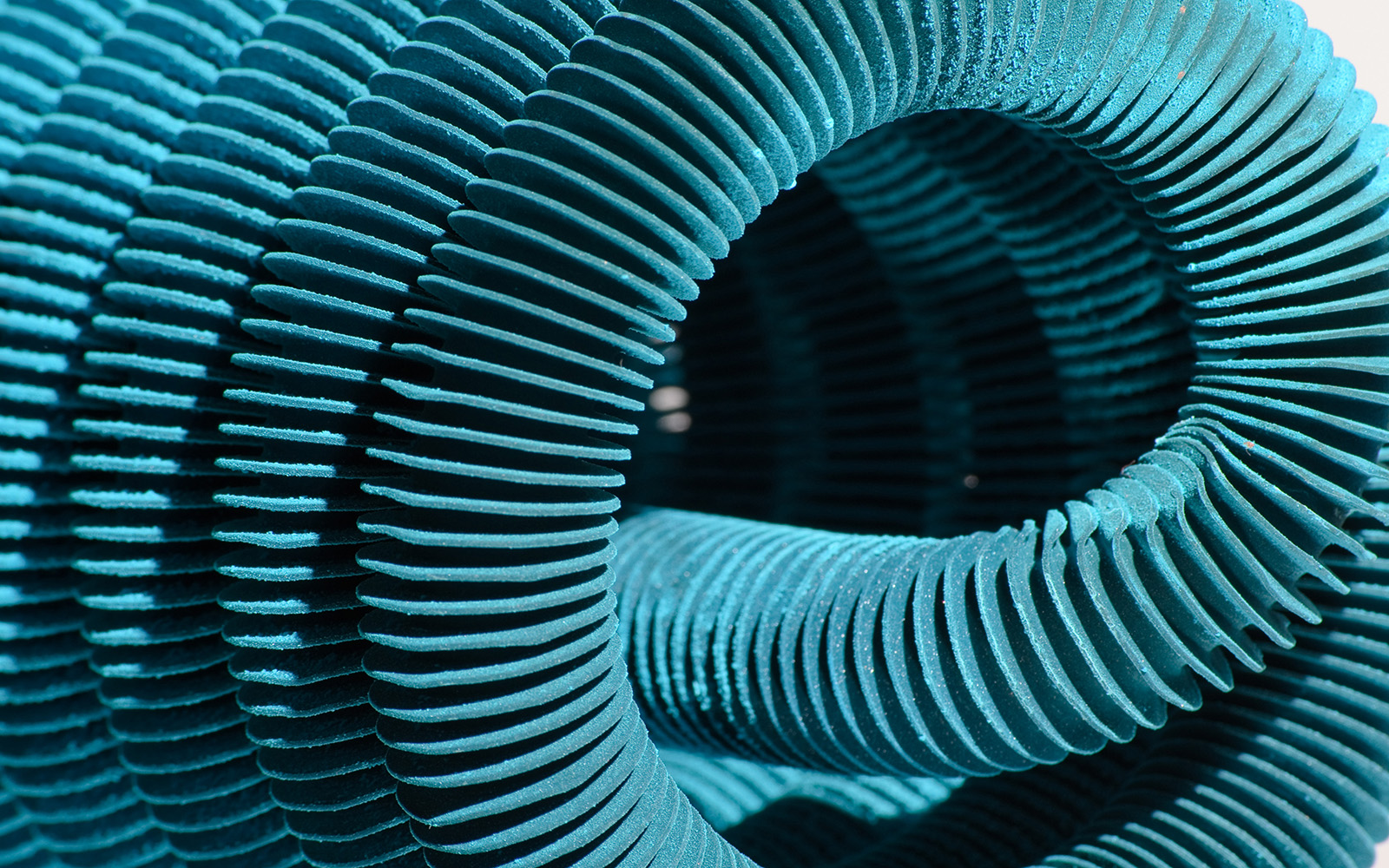Efficient thermal cooling and heating
Thermal systems use heat to produce cold, and vice versa. To do so, a material is needed that can dissipate water vapor particularly well and quickly. A new method simply applies this property as a layer onto the components.

Refrigerators have the human body as an example: When we perspire, water evaporates on our skin and cools it. The lower the atmospheric pressure, the easier this is. If the process is transferred to a vacuum, water already evaporates at a few millibar and a temperature of 10 degrees. So that the devices continuously cool, the vapor must be removed. This is achieved, for example, by an electric compressor, just as the water vapor in our refrigerators is removed from the gas phase and then re-liquefied. An alternative is the thermal compressor, a porous material that can absorb water vapor. In this variant, the operating power is not electrical, but thermal. Heat pumps or chillers operated in this manner produce cold from heat, and vice versa. So far, however, these have not been able to prevail entirely over their electricity-powered counterparts; their power density is too low. What is lacking are materials and components that are capable of sufficiently discharging the water vapor in a shorter time.
Materials must absorb water vapor
Researchers at the Fraunhofer Institute for Solar Energy Systems ISE in Freiburg have now closed this gap. Their metal organic frameworks (MOFs) are particularly well suited to absorb water vapor. In this process, a metallic cluster and organic linkers together form a three-dimensional porous structure. “MOFs can be put together arbitrarily like Lego bricks and outperform every previously known class of material in terms of flexibility. The materials are porous and have interior surfaces which can add up to 4,000 square meters per gram. This is sufficient space for the water vapor to be able to adsorb and accumulate,” explains Dr. Stefan Henninger, Head of the Sorption Materials Group at the ISE.
Together with his colleagues, the researcher has investigated a large number of MOFs and identified those which are particularly stable with respect to water vapor. Instead of the previous 0.4, these can absorb up to 1.4 grams of water per gram of material. So far, MOFs are usually only available as a powder and can therefore be difficult to incorporate into the relevant device structures, such as heat exchangers. Prior art has been loose granules. This has the disadvantage, though, that only selective contact exists between the adsorbent material and the component. As a result, the material or heat transfer is limited. It is better to apply the MOFs as a layer, in order to achieve the greatest possible surface.
The researchers have accomplished this. Their layers can be directly applied without further auxiliary layers being necessary in between. Moreover, the resulting products reach the cooling and heating thicknesses of 50 to 150 micrometers, which are relevant for cooling and heating. In the prototype form, the MOFs are directly crystallized onto metals. For other materials, such as ceramics, the scientists have accomplished this with binder-based coatings. In both methods, the components of the device are simply immersed in a fluid containing all the essential components of the material. The temperature needed for the direct crystallization therefore occurs only on the surface of the component. As a result, only minimal waste is produced. “The MOF layer grows directly on the component at a rate of up to 50 micrometers per hour. This is significantly faster than before,” says Henninger. The researchers have so far coated components of up to 15 x 40 centimeters with the new procedure.
The technology is not limited to cooling and heating equipment. “Due to the enormous flexibility of MOFs and our manufacturing process, a variety of applications is possible. We can apply the desired structure quickly to almost any component. In principle, our technology could be beneficial for every process in which material or heat transfer plays a role,” says Henninger. For example, in the chemical industry, where gases are separated and heating is thereby created or needed. Or in medical technology, where properly coated surgical instruments reduce the bacterial load. The technology can even be of use in everyday life: by eliminating the unattractive water stains on plastic plates and cups, etc. in our dishwashers.
Fraunhofer has concentrated its activities in MOF research in the internal project MOF2market:
http://www.mof2market.fraunhofer.de/de/projekt.html